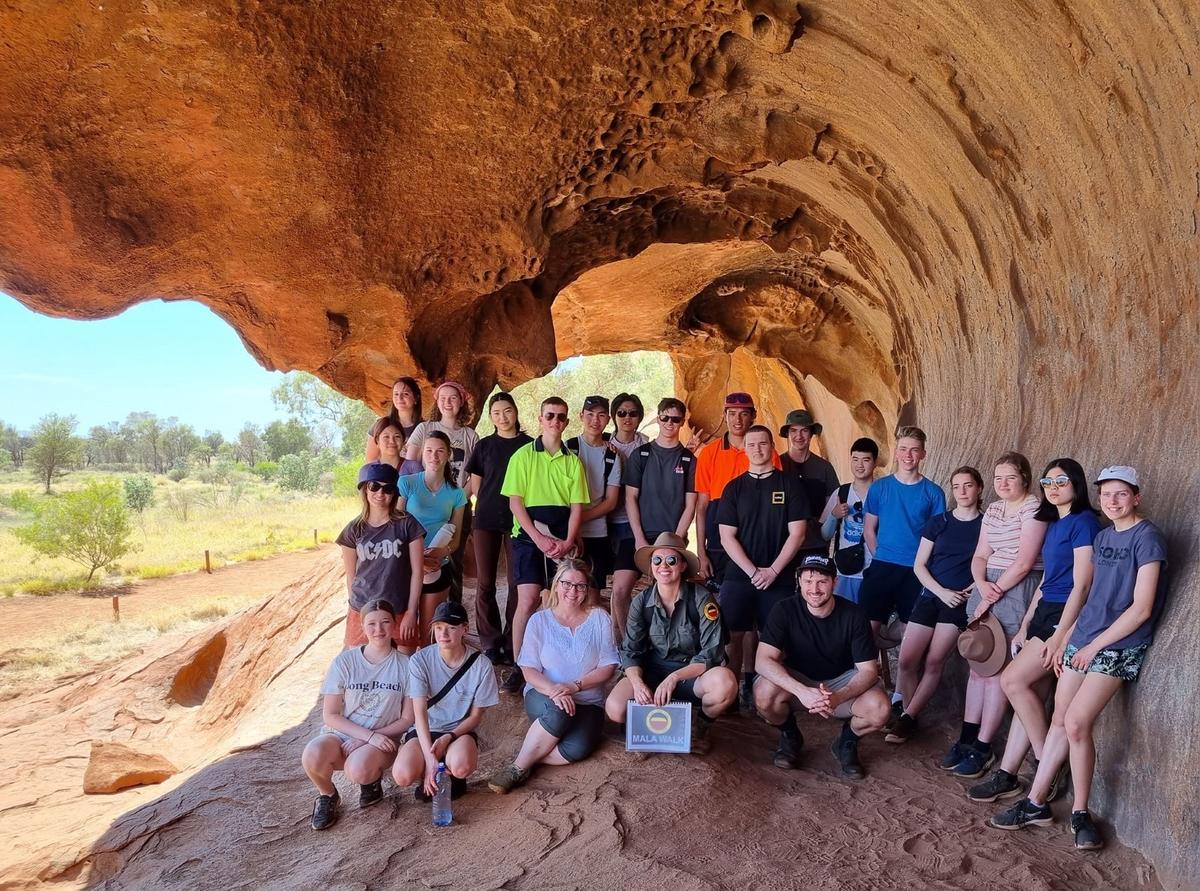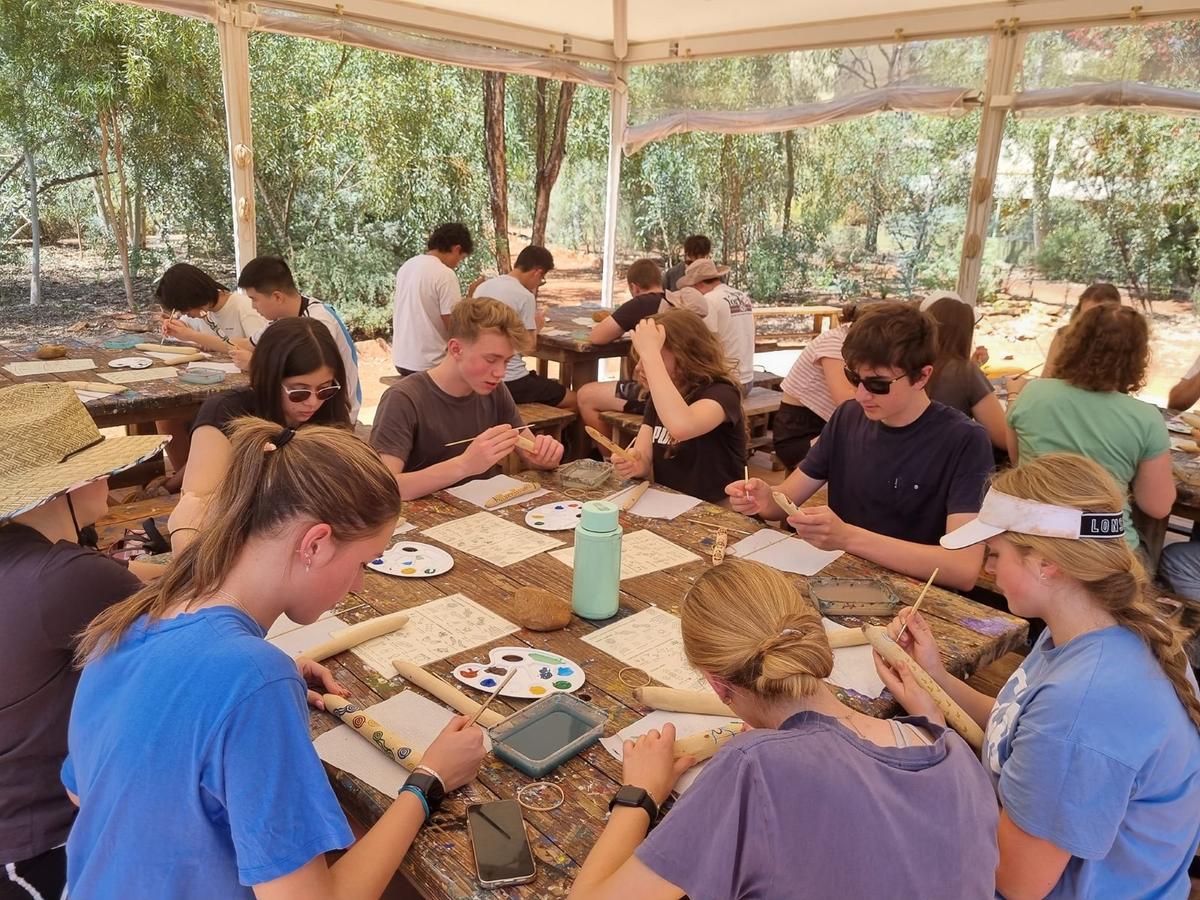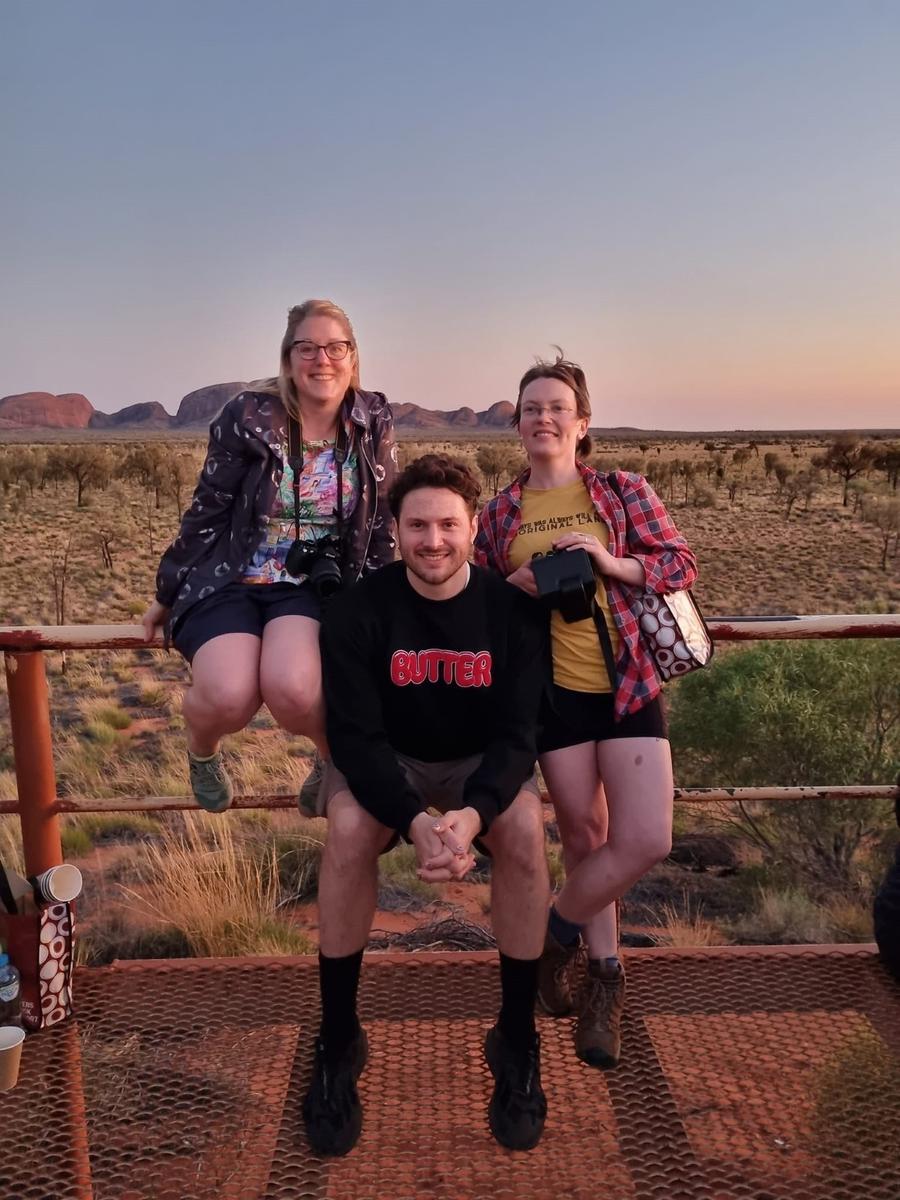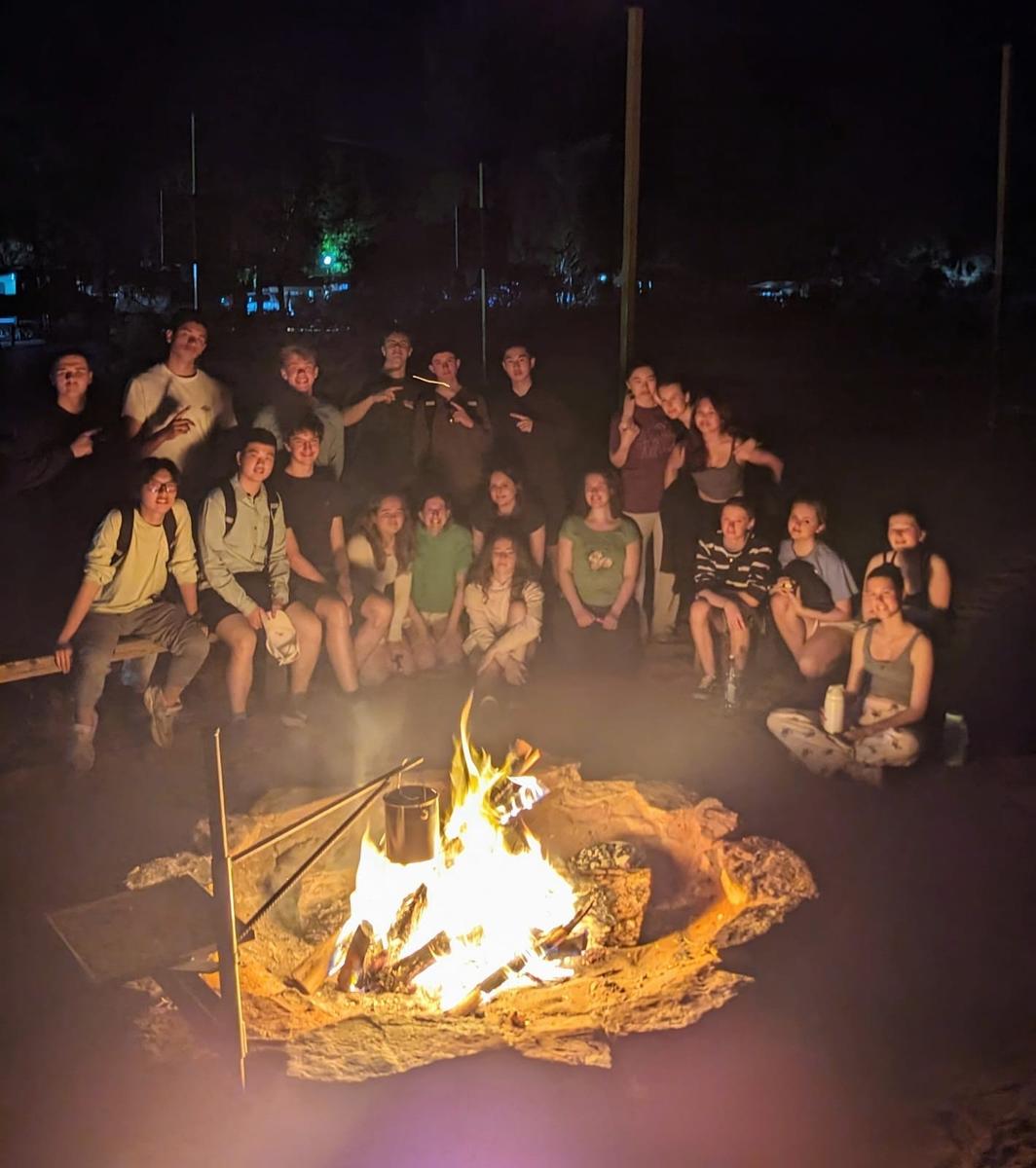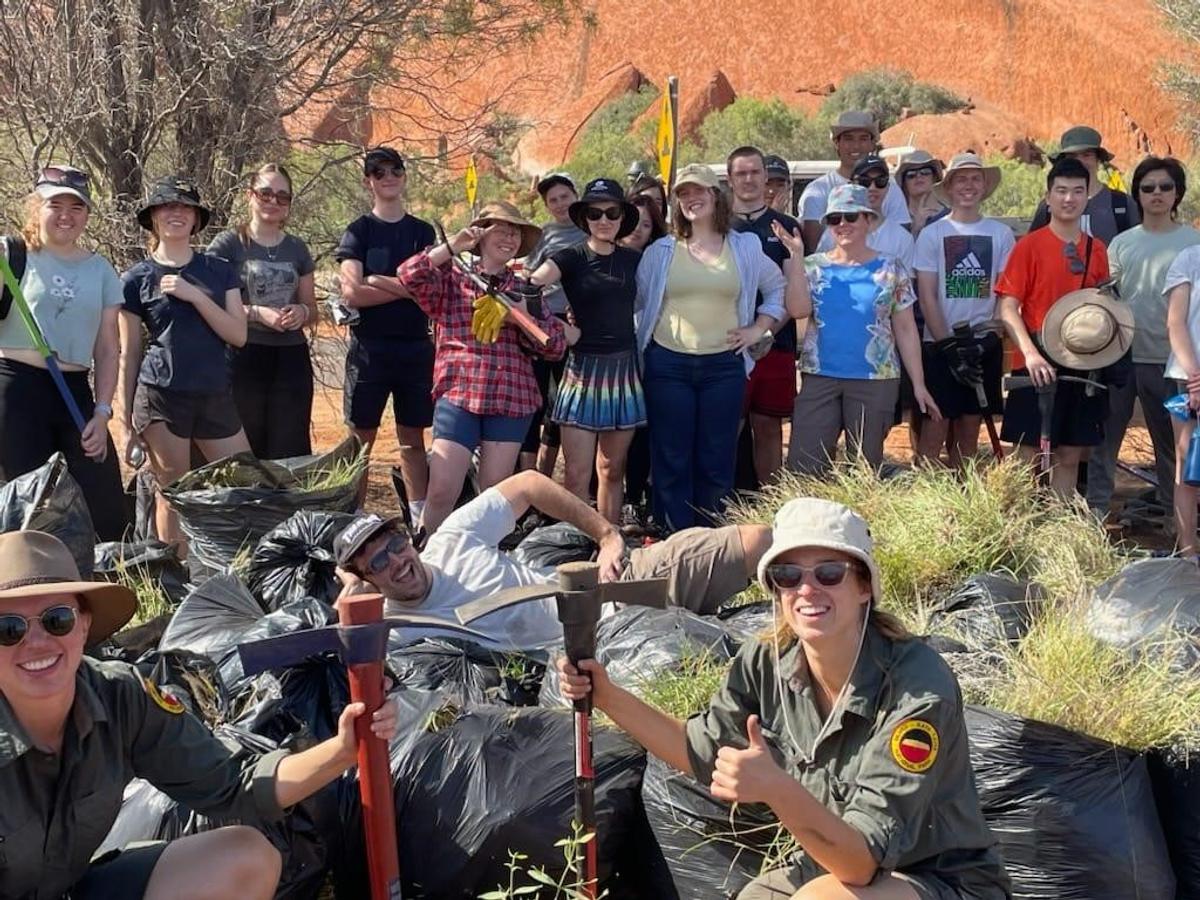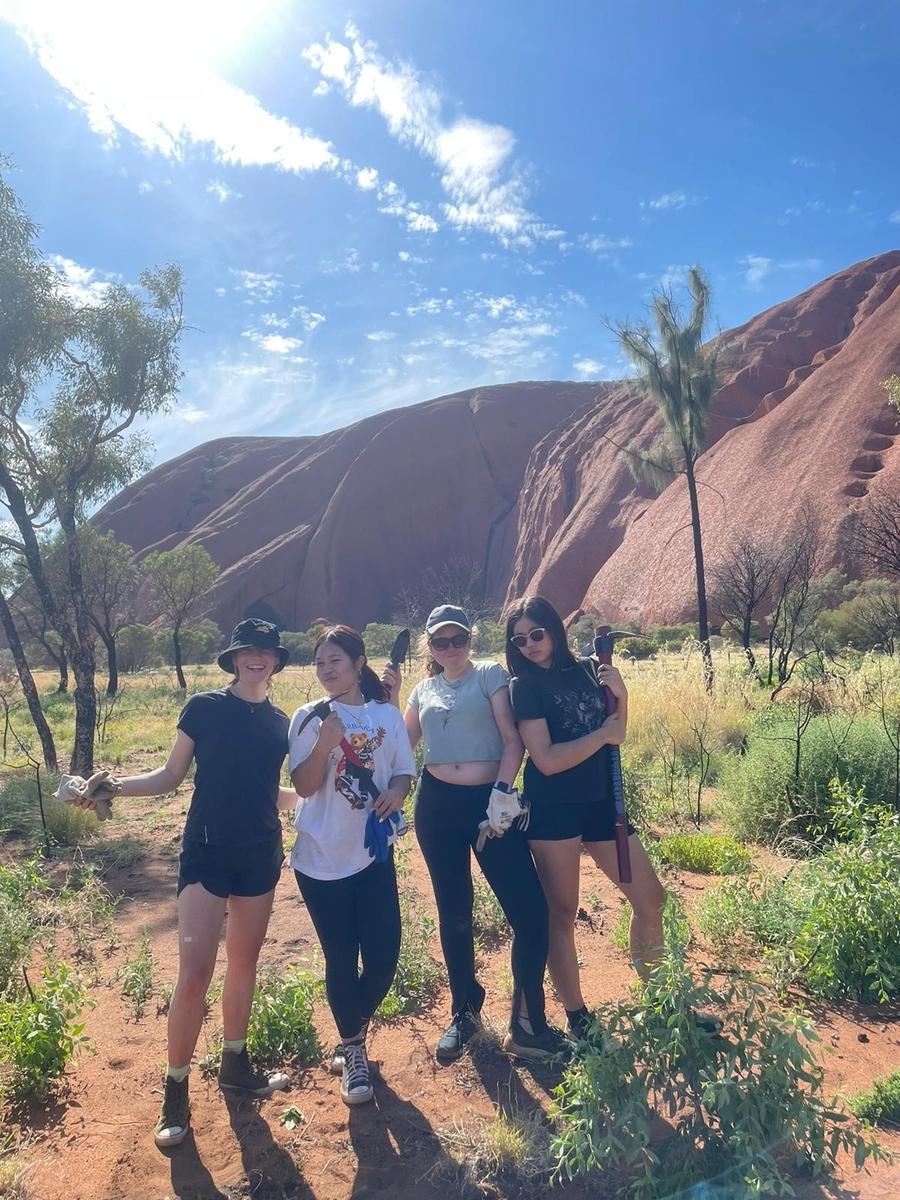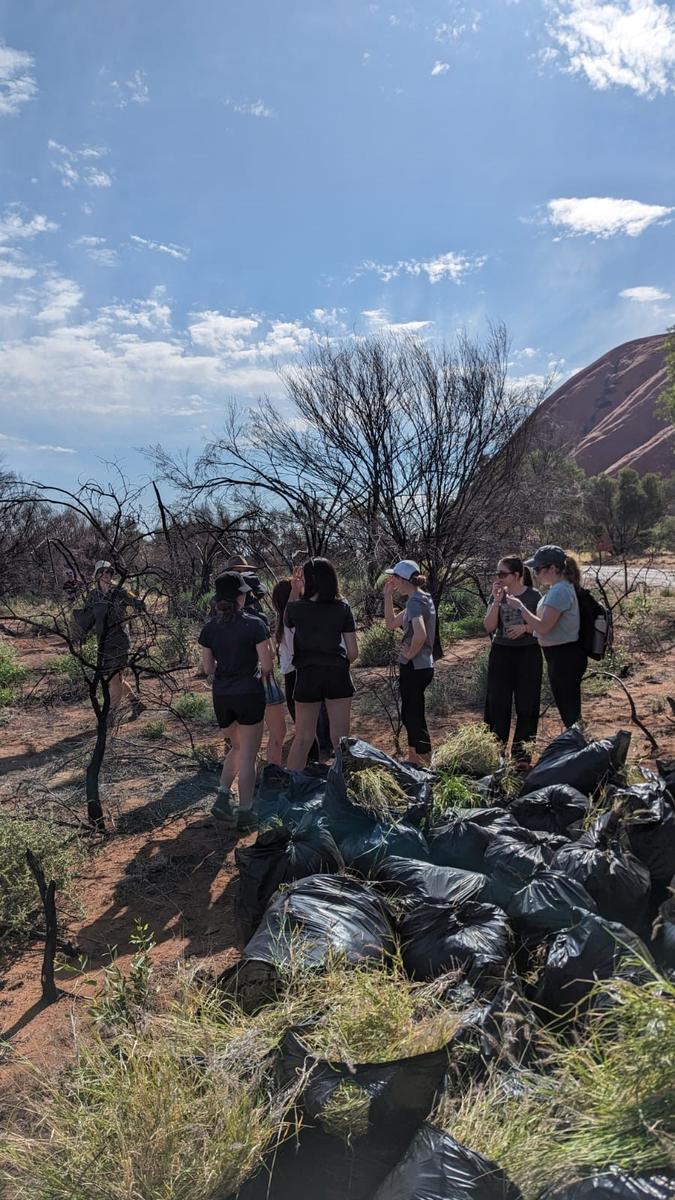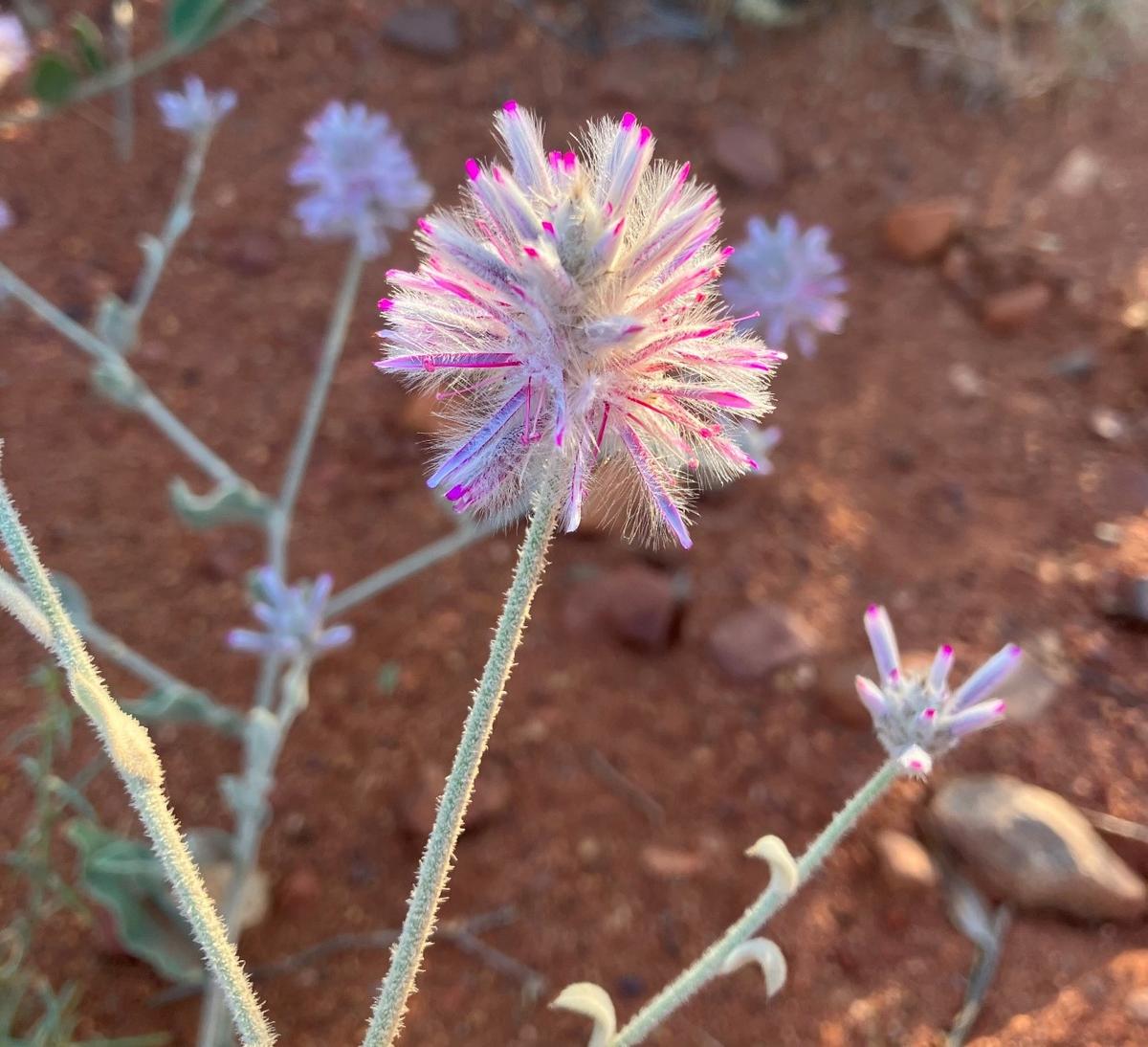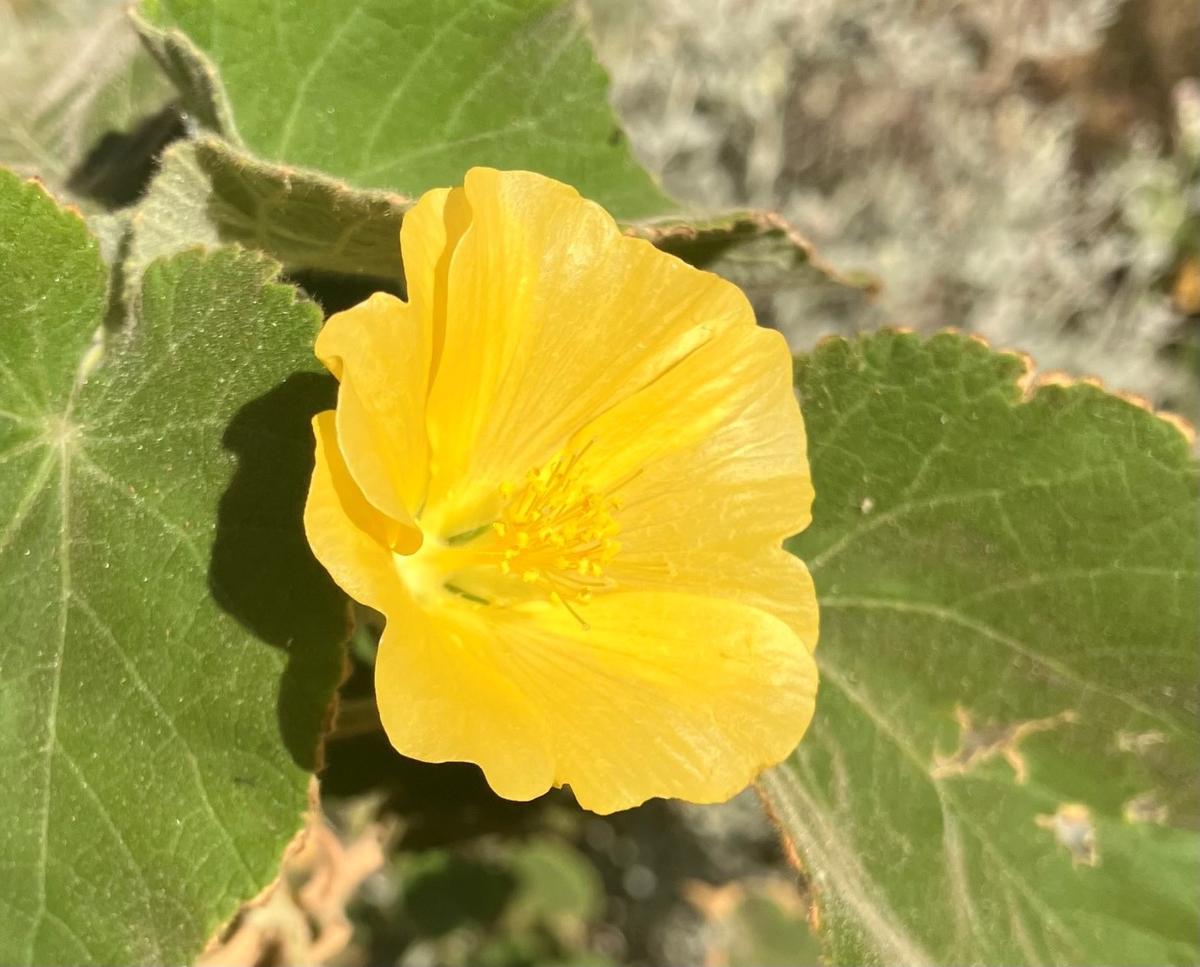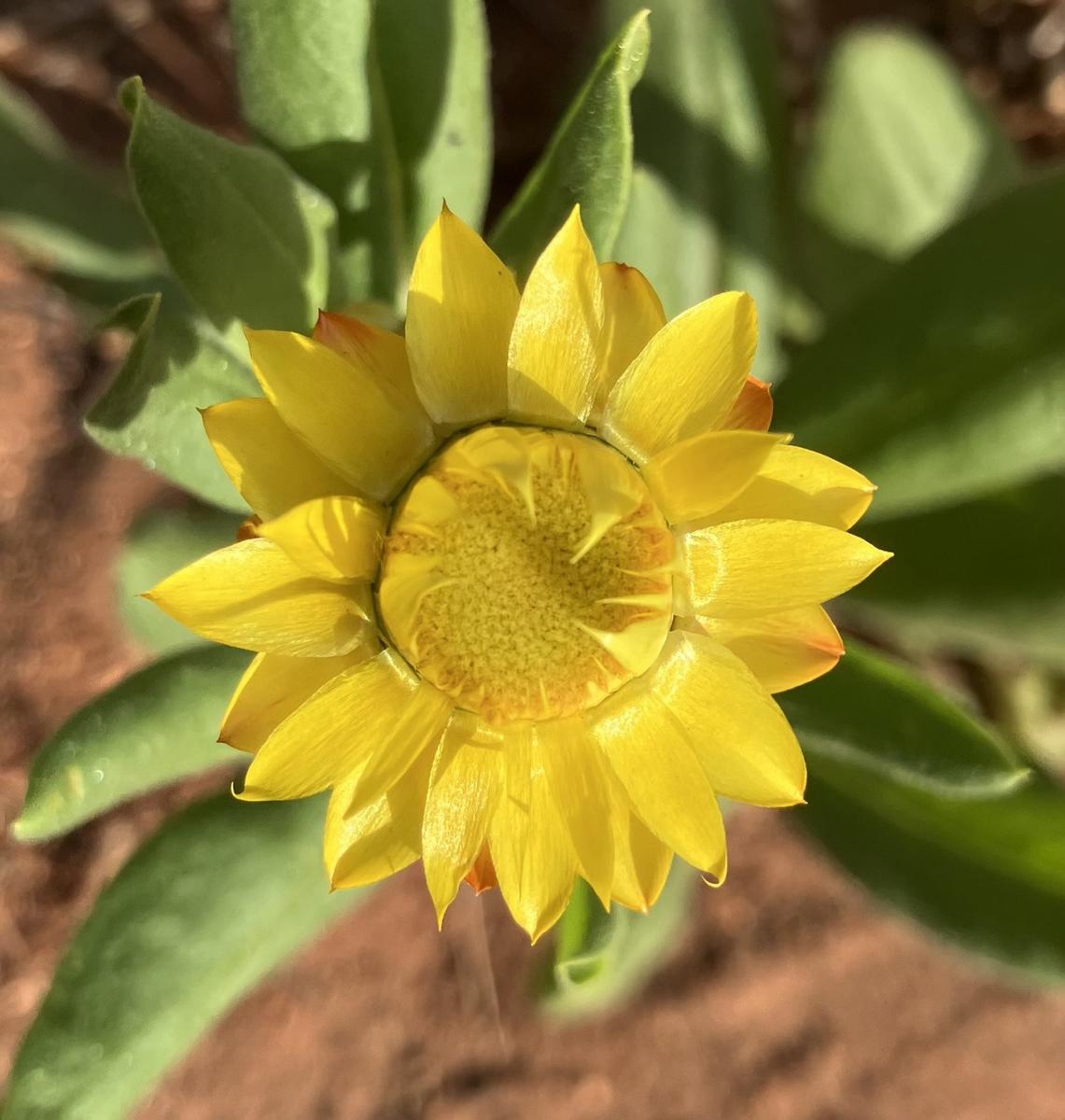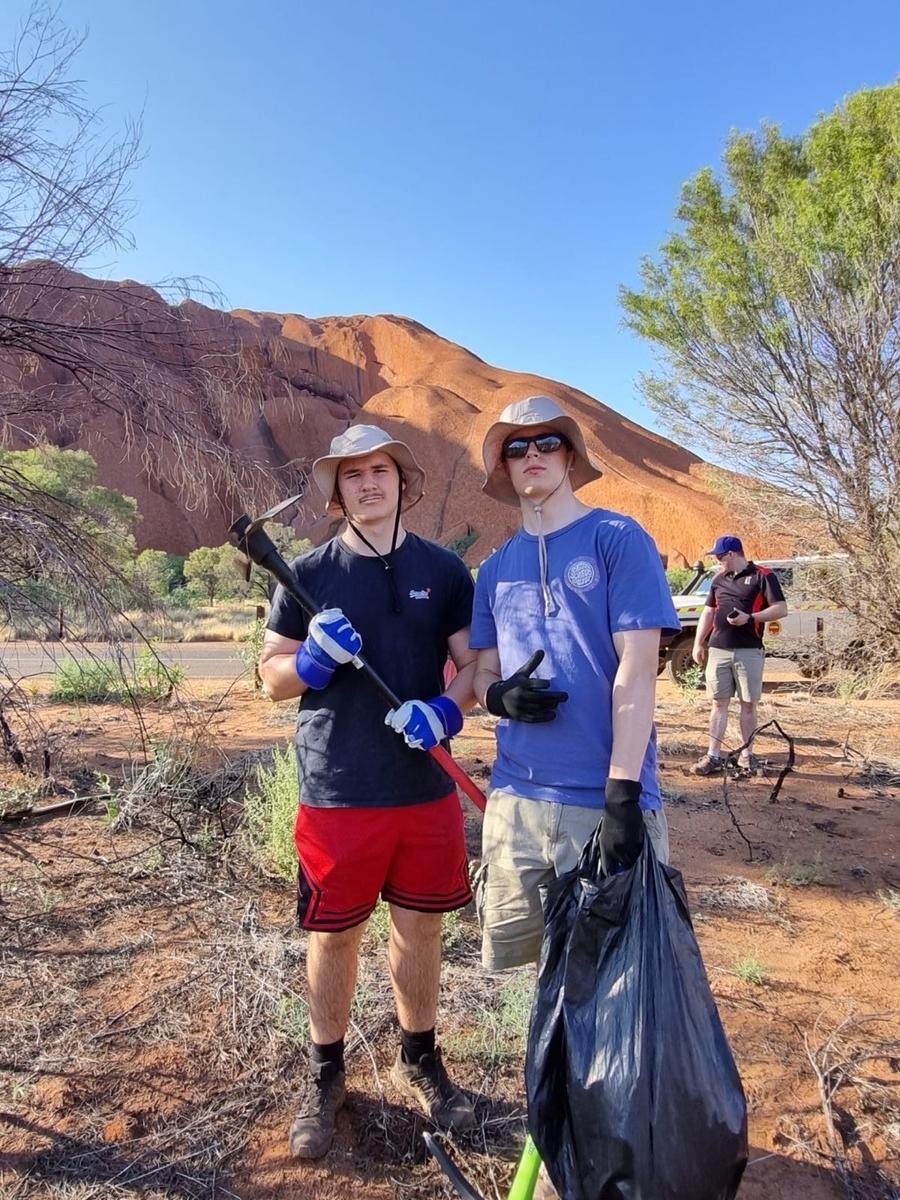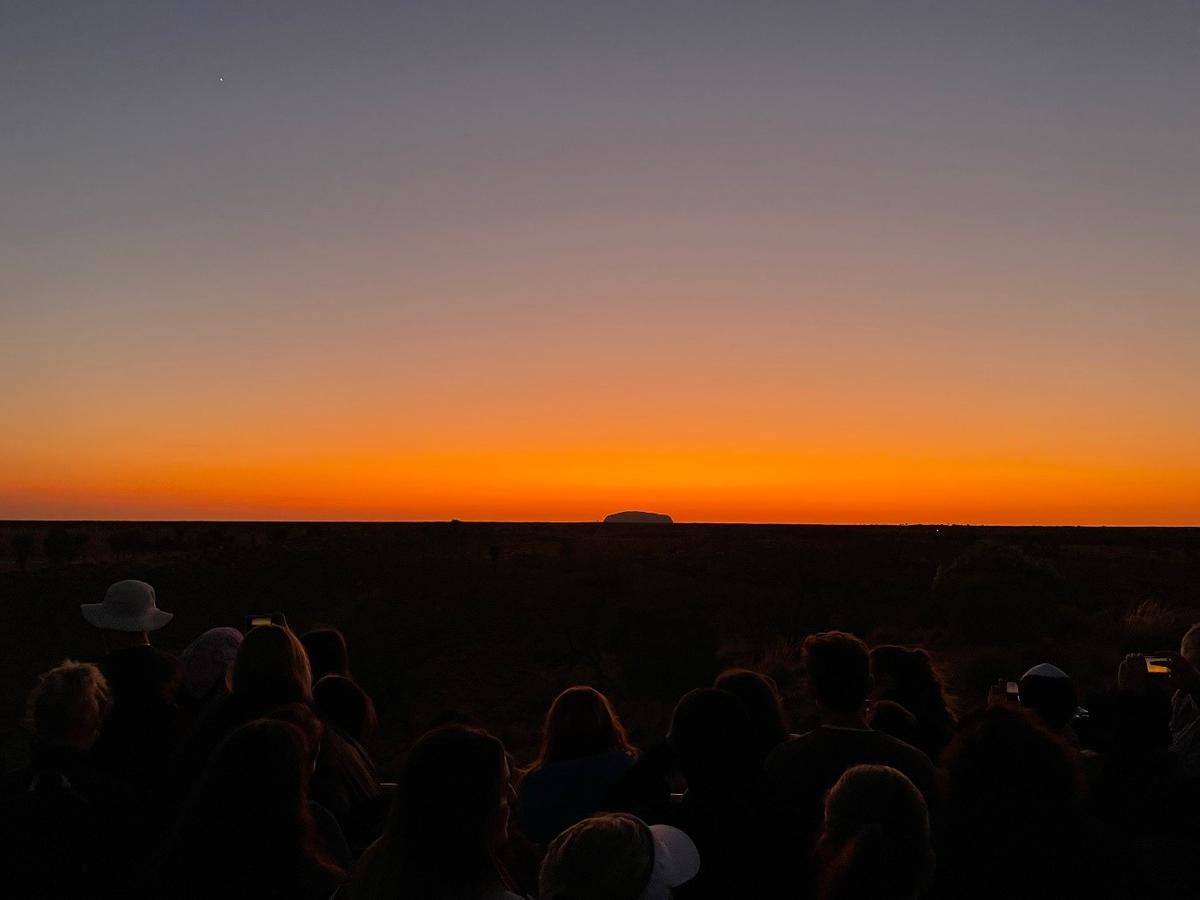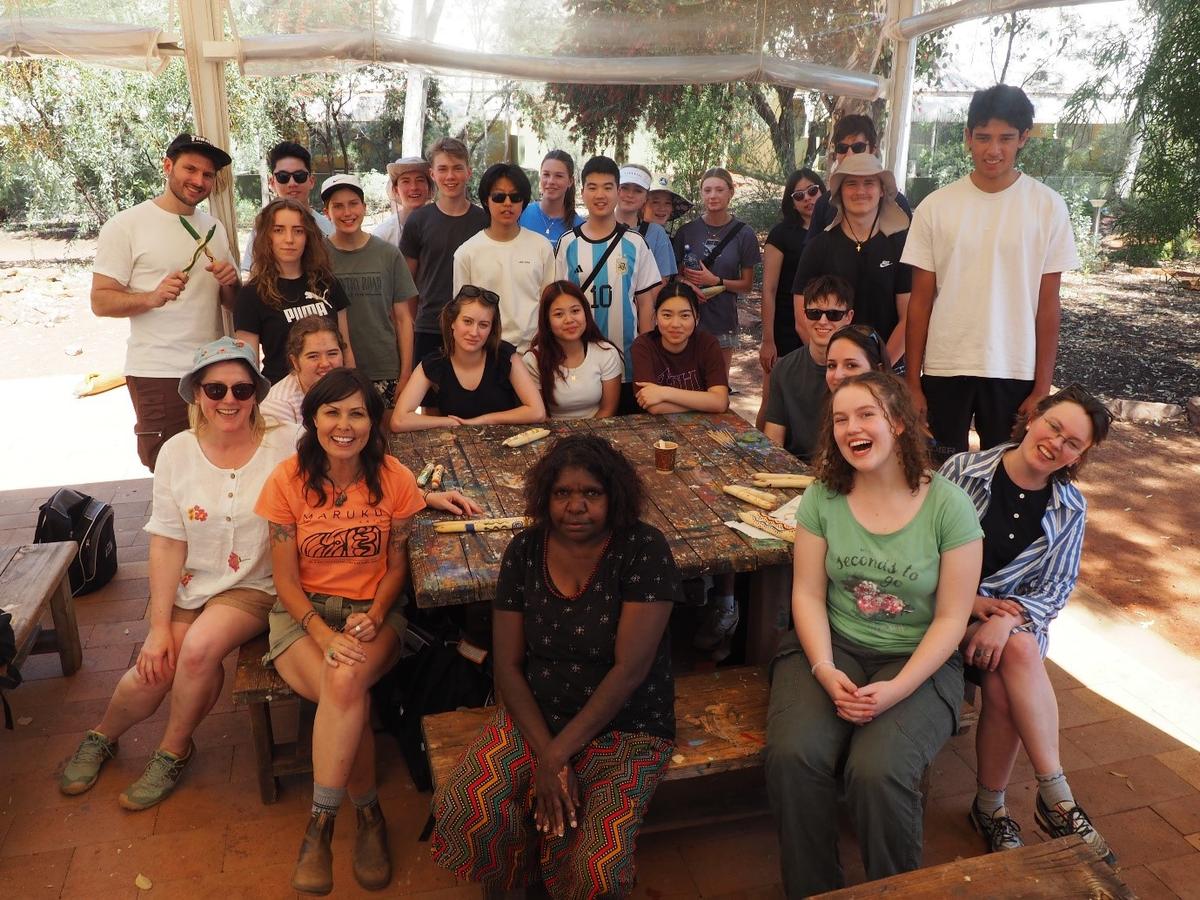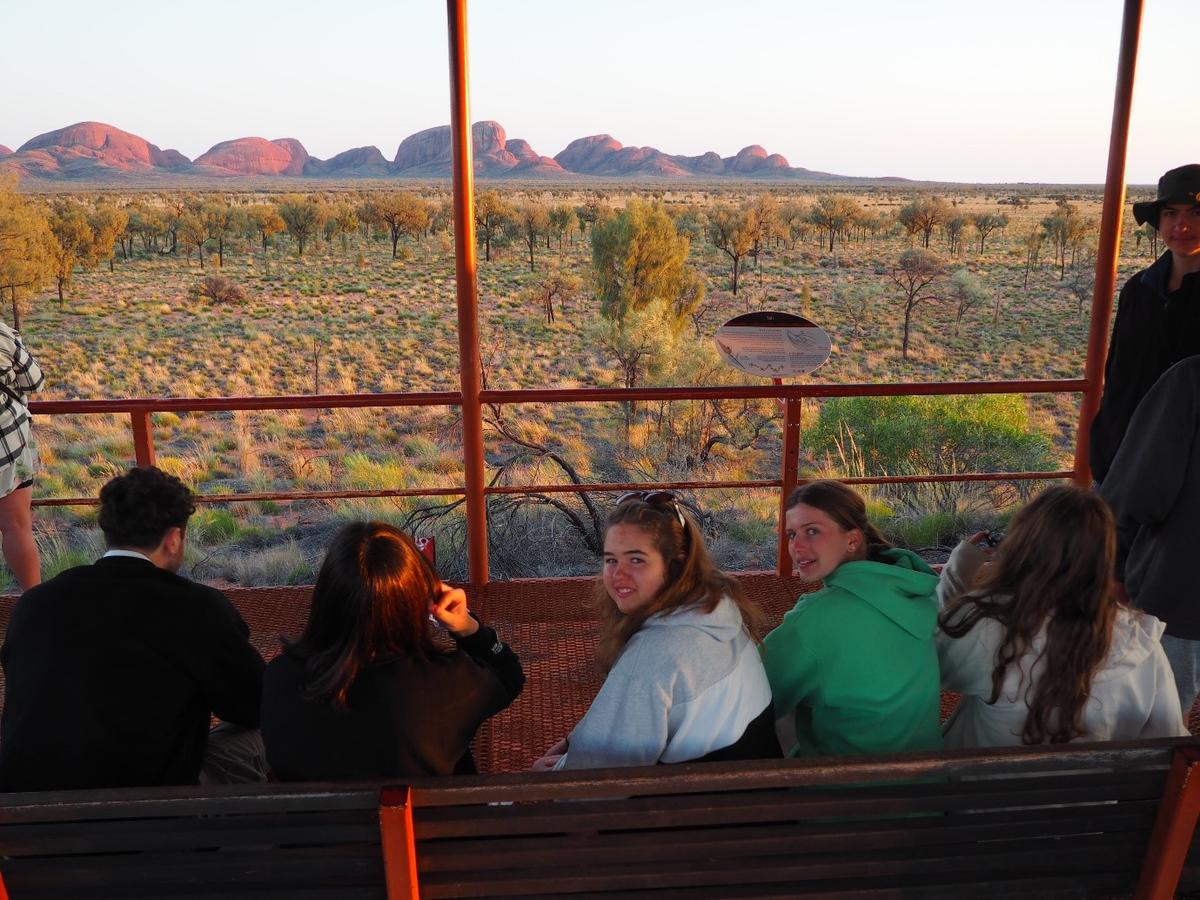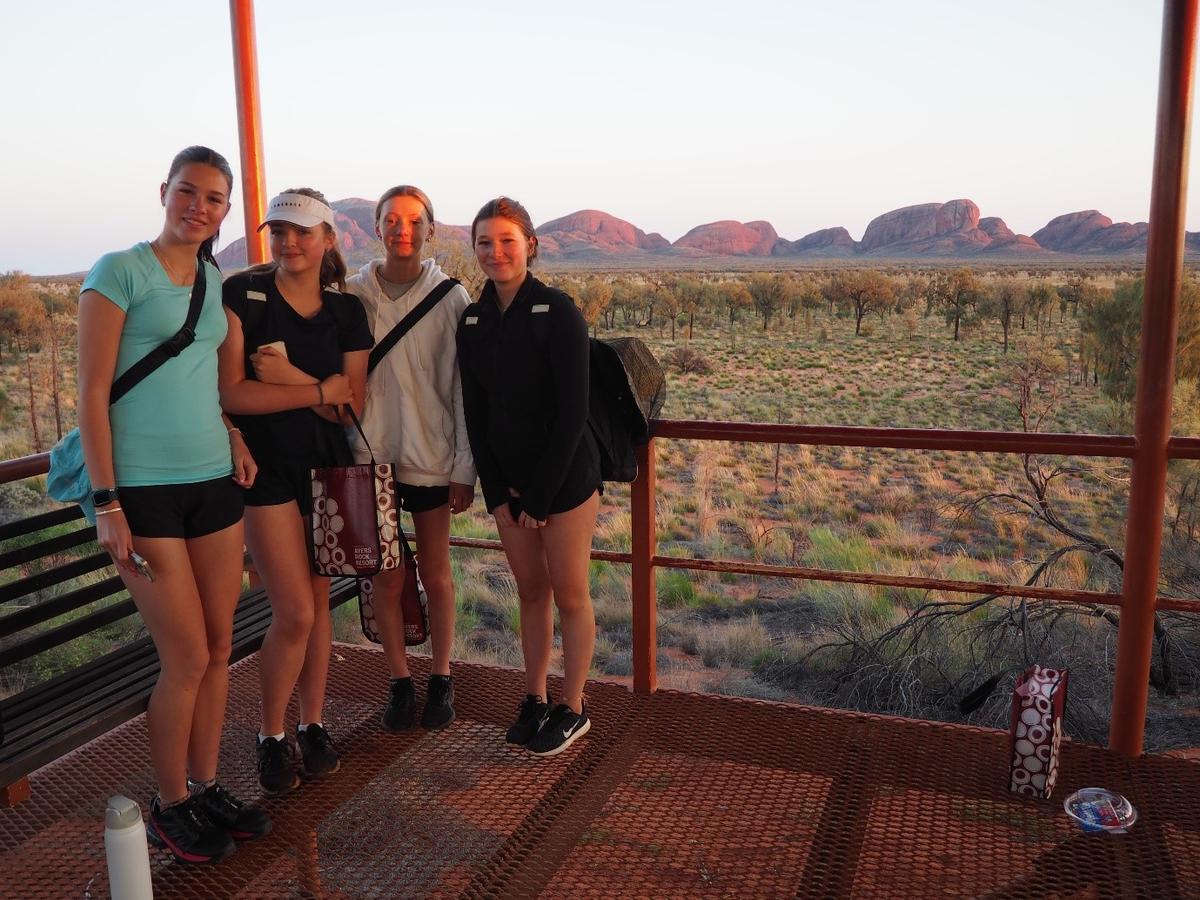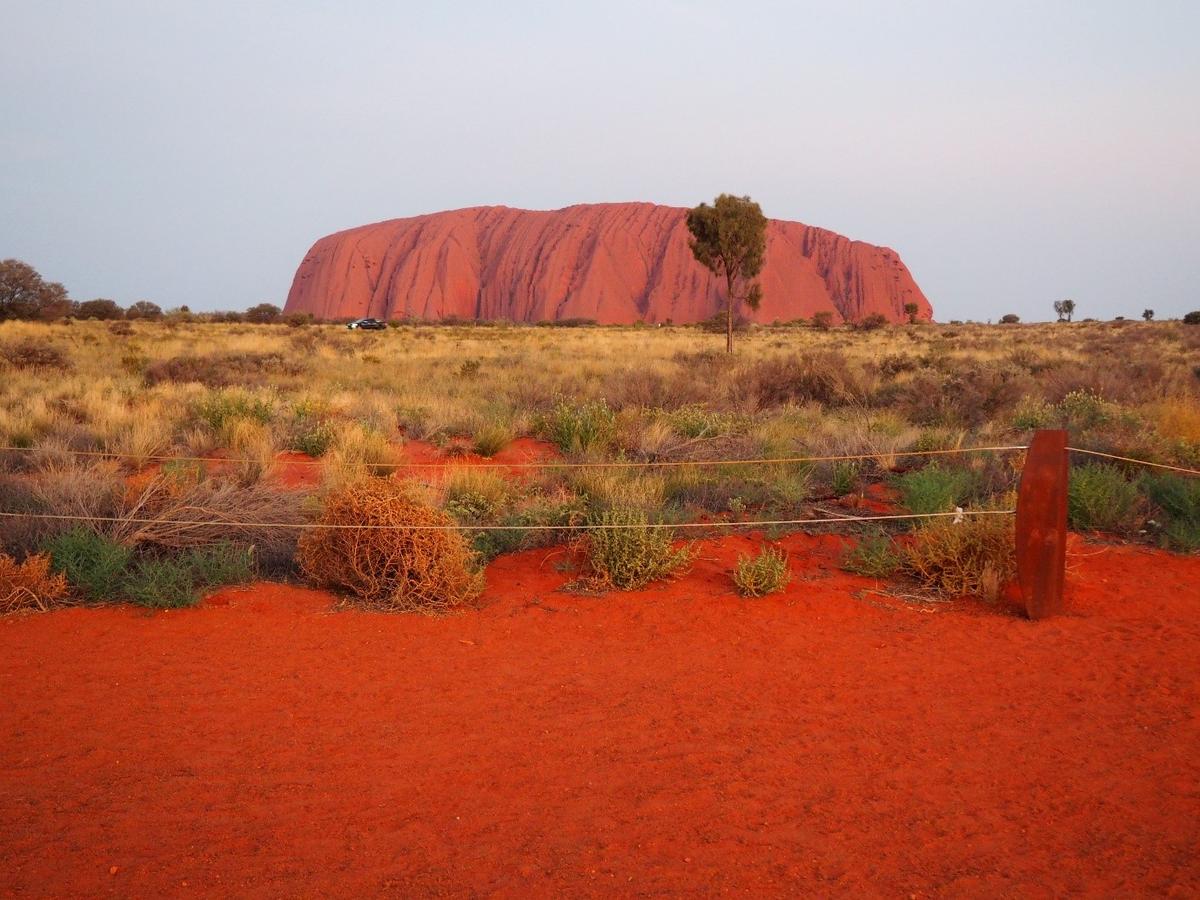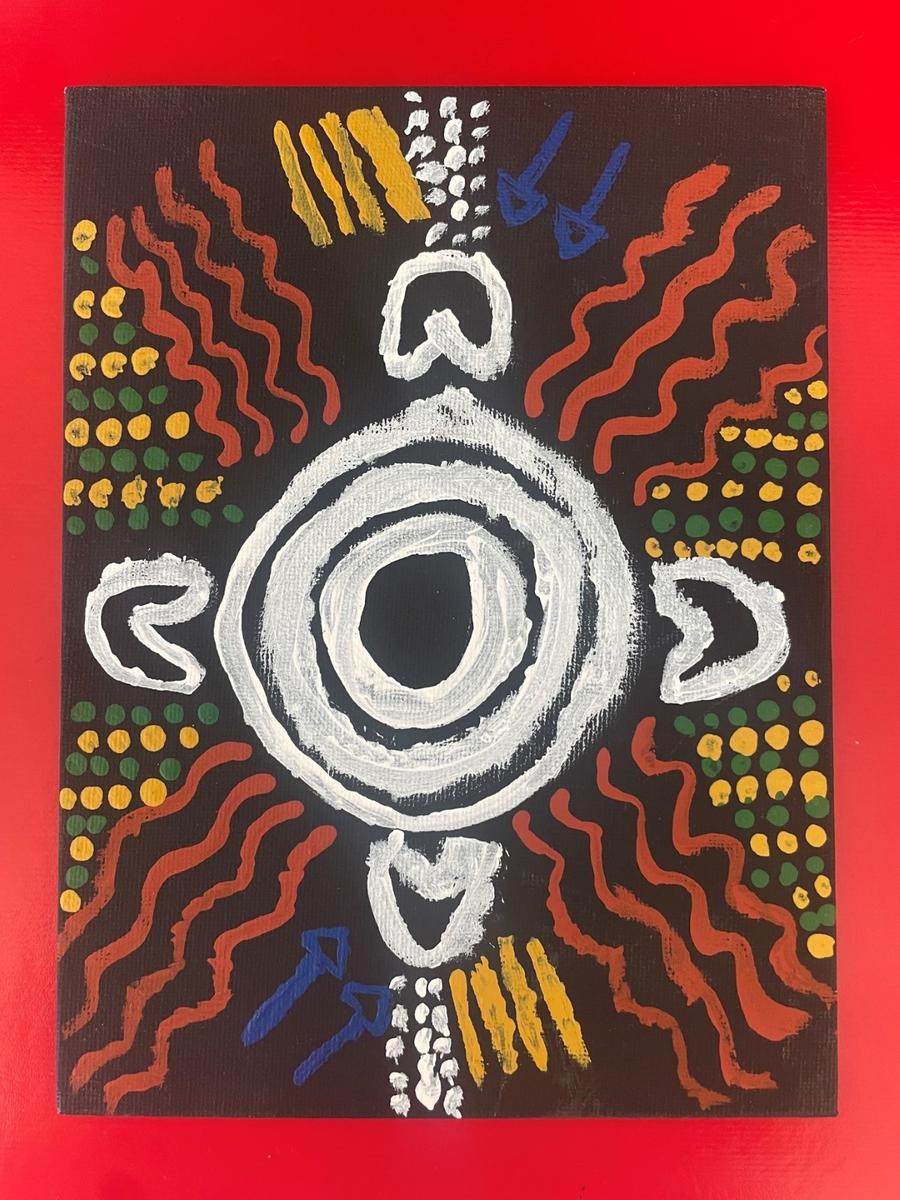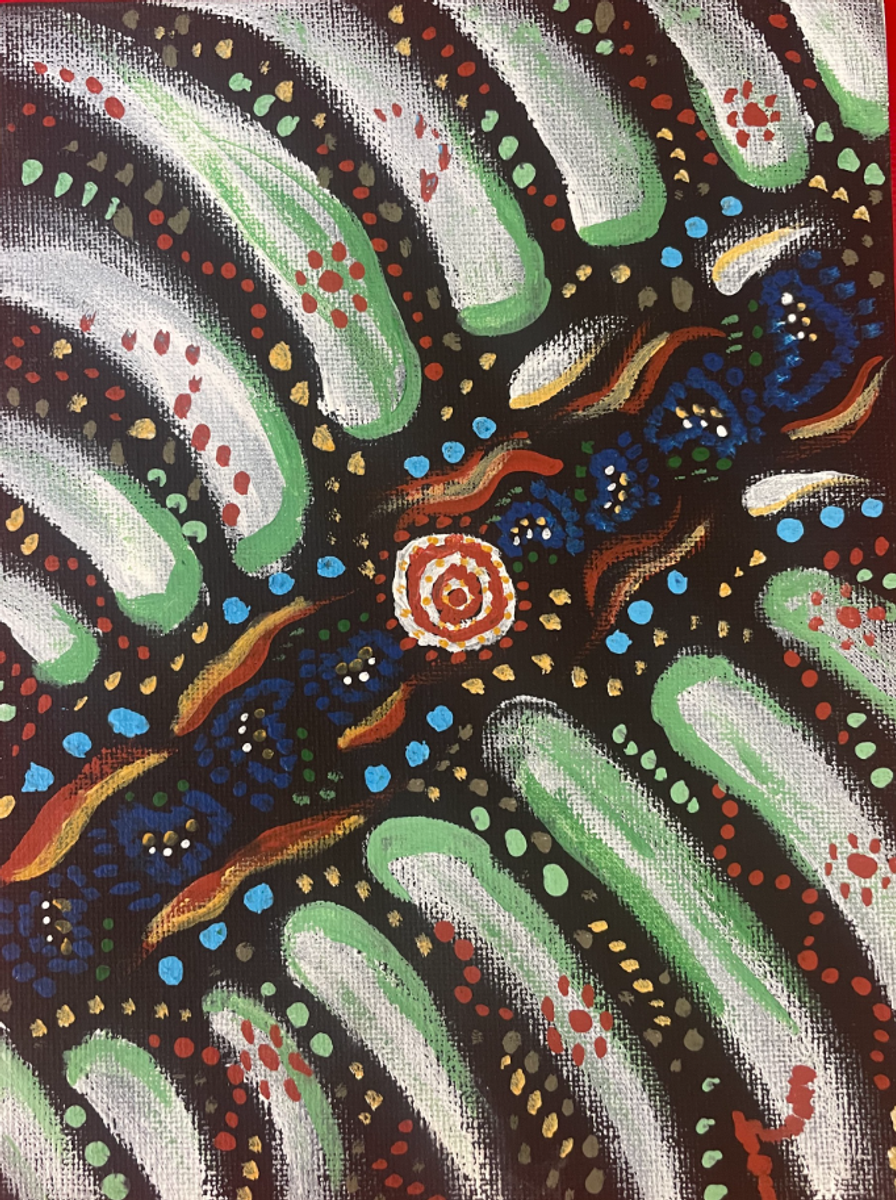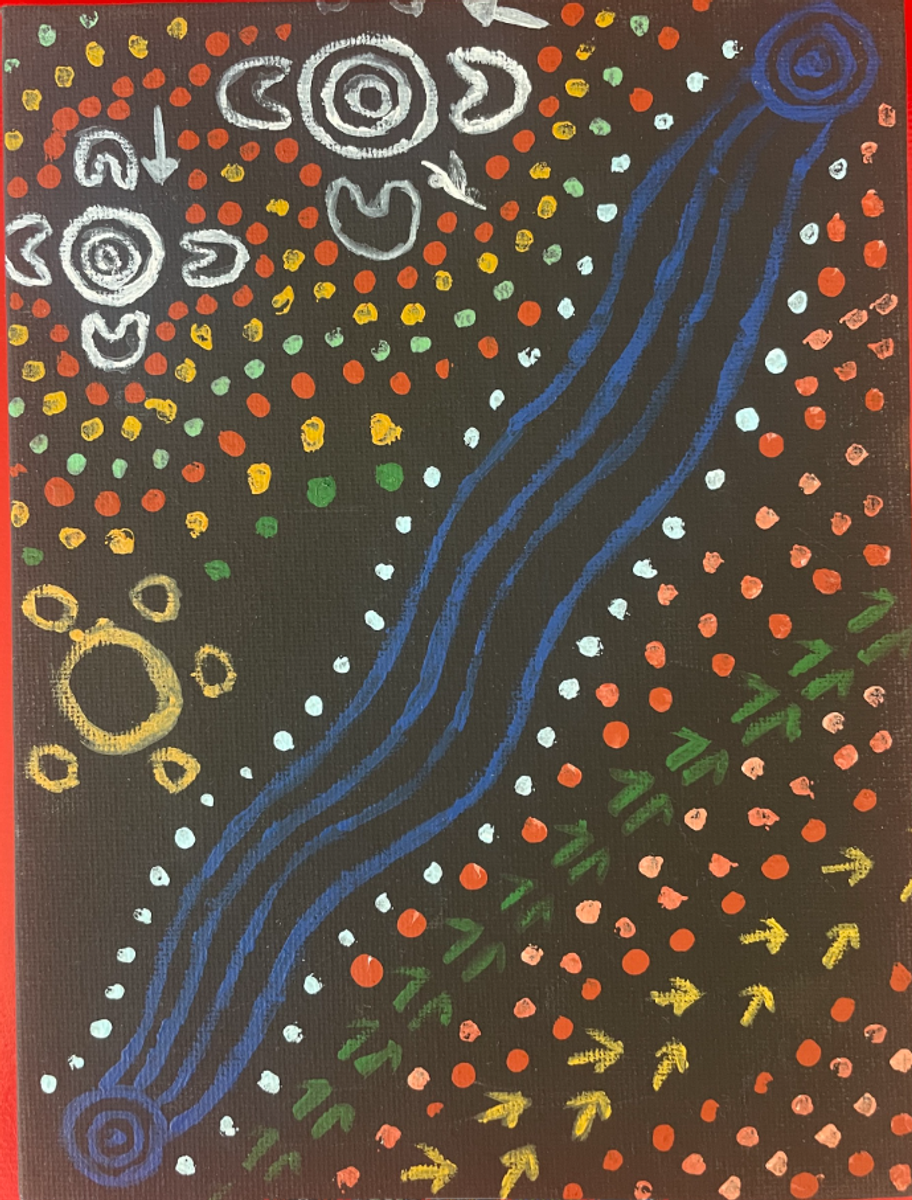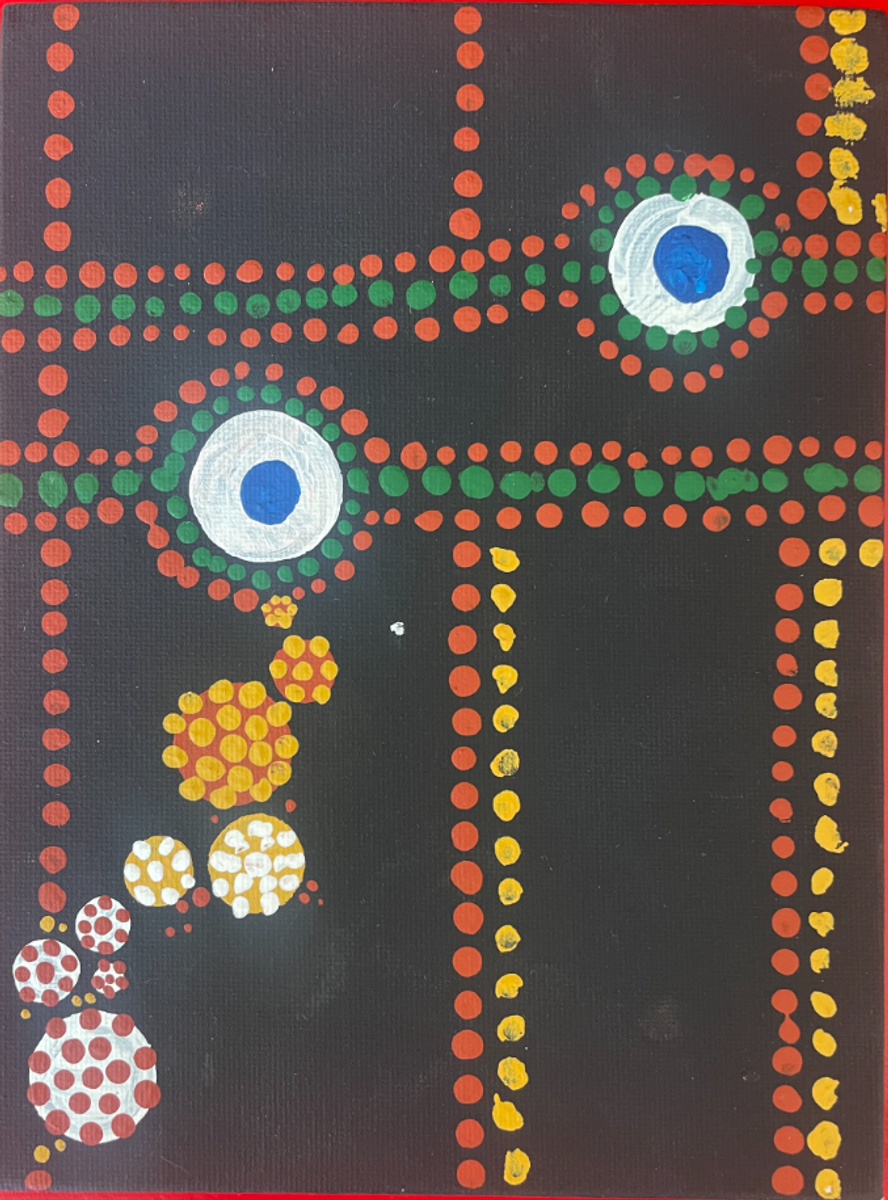Central Australia Tour Reflection
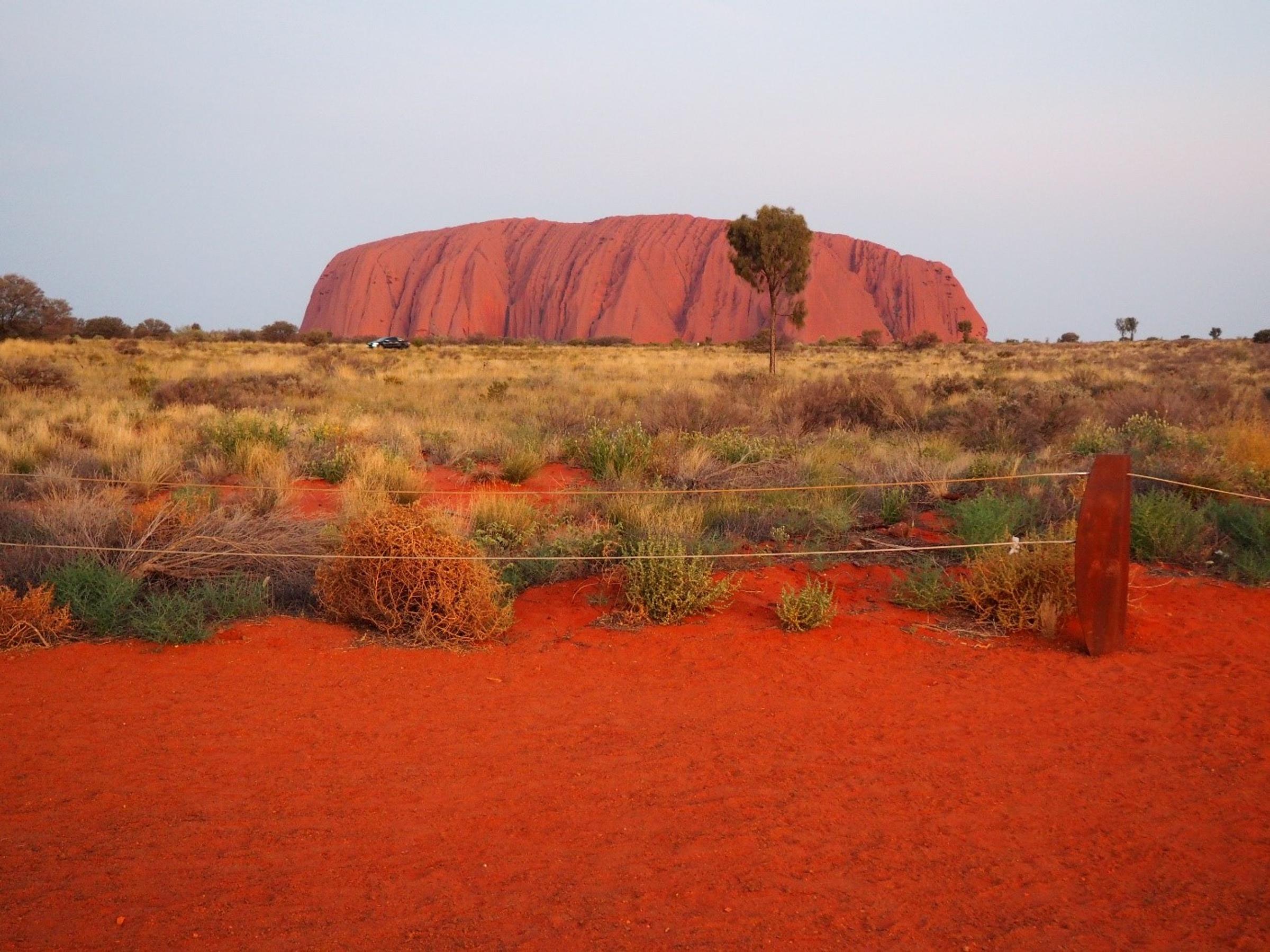
When the bus rounded the bend and the immensity of Uluru loomed ahead of us for the first time, it was a jaw-dropping sight. Even from 15kms down the road, the world’s largest monolith is truly breathtaking. Half a billion years in the making, Uluru has sacred meaning to the local Anangu people who have been its custodians for the past 60,000 years at least, as well as being an Australian icon. It was a privilege to visit this very special place with Year 10 and 11 AHS students and learn about its rich history and cultural significance together.
For some, it was their first time on a plane, for others, it was their very first campfire experience – Mr Tolomei carried out the role of Marshmallow Roasting Mentor with great skill and style! For all of us, it was our very first time seeing the rings of Saturn and the craters of the moon in that endless pitch-black sky with our very own eyes at our astro-stargazing night. On the last night, we were lucky enough to enjoy the remarkable Field of Lights art installation; 50,000 spindles of light stretching as far as the eye can see.
The real highlight for me was seeing students really engaging with each new experience, actively listening, asking insightful questions and making their own meaning and memories as the week went on. They made their mark on the Yulara community; literally every guide and facilitator went out of their way to remark on the cohort saying how courteous and polite, switched on and involved they were. We couldn’t be prouder of them!
Kristie Satilmis
Assistant Principal
If I told you we’d be asking your child to spend 3 hours in 30-degree sun pulling out weeds in the red hot desert of Central Australia you’d probably laugh in my face and tell me, “there’s no way you’re getting them to do that”, and I’d agree with you, if your child wasn't an Auburn High School student! The Central Australia AHS staff and student crew demonstrated high degrees of Respect and Aspiration on this hot summer's day when we set ourselves on the mission – To Save the World. By world I of course mean a 100x100m patch of desert land, and by save, I mean ERADICATE an invasive species of buffel grass - and eradicate we did. Equipped with nothing but our bare hands, some gloves and a passion for land restoration - 3 hours later and the conservation site was restored to its natural state.
Buffel grass is a fast-growing grass species that was introduced to Central Australia for its potential use as forage for livestock due to its drought tolerance and palatability. However, it has become an invasive plant because it outcompetes native vegetation, and disrupts natural ecosystems.
The National Park rangers who facilitated the project were in awe at our speed and determination. According to them, the area we cleared in 3 hours takes their usual volunteers 3 days! Additionally, this was the first time in history that a school group has helped clear buffel grass at Central Australia – so hopefully we’ve paved the way for future generations of students!
Sam Tolomei
Psychology teacher and Year 11 Assistant Level Leader
As students in Australia we learn how Indigenous Australians are part of one of the oldest continuing living cultures on the planet. It is often hard to understand the significance of that statement living in urban Melbourne. Our recent trip to Central Australia has deepened my understanding of the significance of the longevity of the country and its stories. Learning facts in books is helpful but seeing landmarks and listening to stories and traditions from the Anangu people helped provide a new perspective. Travelling and being immersed in the landscape of the central desert region and parts of the Anangu culture allowed me to appreciate an entirely different Australia to my life in Melbourne. During our stay we participated in hikes around Uluru and Kata Tjuta, listened to stories native to the area and learnt about the cultural practices and how the culture continues to inspire new generations of Australians. I’ve come home with so many memories but the most significant day to me was when we helped clear out an invasive weed species around Uluru. As environmental issues are close to my heart, I was excited at the opportunity to be able to give back to the community. If anyone is considering joining this trip in 2025, it is not an opportunity to miss!
Sophie N.
Going into this trip I didn’t think there would be a lot of greenery, it’s the Red Centre after all. I hate to admit when I’m wrong, but I really was! I felt so immersed in nature when we were all there. It was really beautiful to see how many plants could thrive in these arid conditions. I especially loved the Valley of the Winds walk at Kata Tjuta, it felt like a flower scavenger hunt. So many different types were blooming on the edge of the trail, little pops of purple, pink and yellow that I just had to capture with my camera. This did mean I was very far behind the rest of the group, but I don’t regret it at all. Some of them even had some cool uses, like the honey grevillea that secretes a sweet honey-like substance. It was a nice pick me up to put my finger in and get a taste when I was tired at the end of the day. We were told that the local Anangu people, the kids in particular, snap them off and use them like a lollipop. don’t blame them, it tastes amazing!
Sasha F.
The Central Australia trip was an amazing experience that I would absolutely recommend to anyone who has the opportunity to go. It was a great time meeting and making new friends while creating even stronger bonds with those I was already close to. Although it wasn’t very much fun to get up at 4:30am to jump on a bus some mornings, the beautiful sunrises and amazing walks we did were very much worth the struggle. The heat of the outback also takes a massive toll on your energy but with the encouragement of your peers and the nice cold pool waiting for you back at the resort, you can push through the pain to reach your goal.
One of the highlights of the trip was the Valley of the Winds walk amongst the 36 domes of Kata Tjuta (Many Heads in the local language), which ended with a spectacular view of the open desert where you can see all the way out to the horizon and get a feel for how much space and land there really is up in the Northern Territory. We then got the opportunity to help the local community with their buffel grass removal work where we removed this invasive plant from a section of the national park to help restore the native plants of the area. The Central Australia trip was overall a great time where I’m sure all of us have created many memories that will stay with us forever.
Jasper K.
I was very pleased that I signed up for this trip the school offered. Every day was planned and explained clearly, whether that was with learning things about the culture or the activities we were taking part in. My favourite parts about the trip were learning new things and spending time with my friends in a great part of Australia!
Evan H.
On our first day, we met Shirley, a local Anangu woman who showed us three sacred sites at the base of Uluru. After learning about how the Anangu people used these caves for secret business, connecting and dancing, Shirley introduced us to traditional paintings on the walls of one of the caves that exceeded 50,000 years old! Using acrylic paint, Shirley taught us some Anangu language and symbols and how to appropriately use the traditional Anangu painting and literacy techniques. Most importantly, we learnt that these symbols must represent our own story and it is an offence to replicate others' stories by mimicking; theirs are not our stories to tell. We had permission to use these symbols to tell our own stories.
Dot painting is a literacy and art technique representing only this continent's central areas and, in this case, the Anangu people's language. Desert clans write in the sand to share information and communicate with each other. This is such an amazing, contemporary and historical way of communicating in an inclusive manner. When acrylic paint was introduced to the central desert areas, this form of communication was translated to the art frame with European art materials. Traditionally Woi Wurrung people, the Koorie community in Naarm (Melbourne), do not use dot painting.
These are some examples of AHS students telling their own stories using dot painting.
Charlotte Dibben
Art teacher and Marrung Lead

